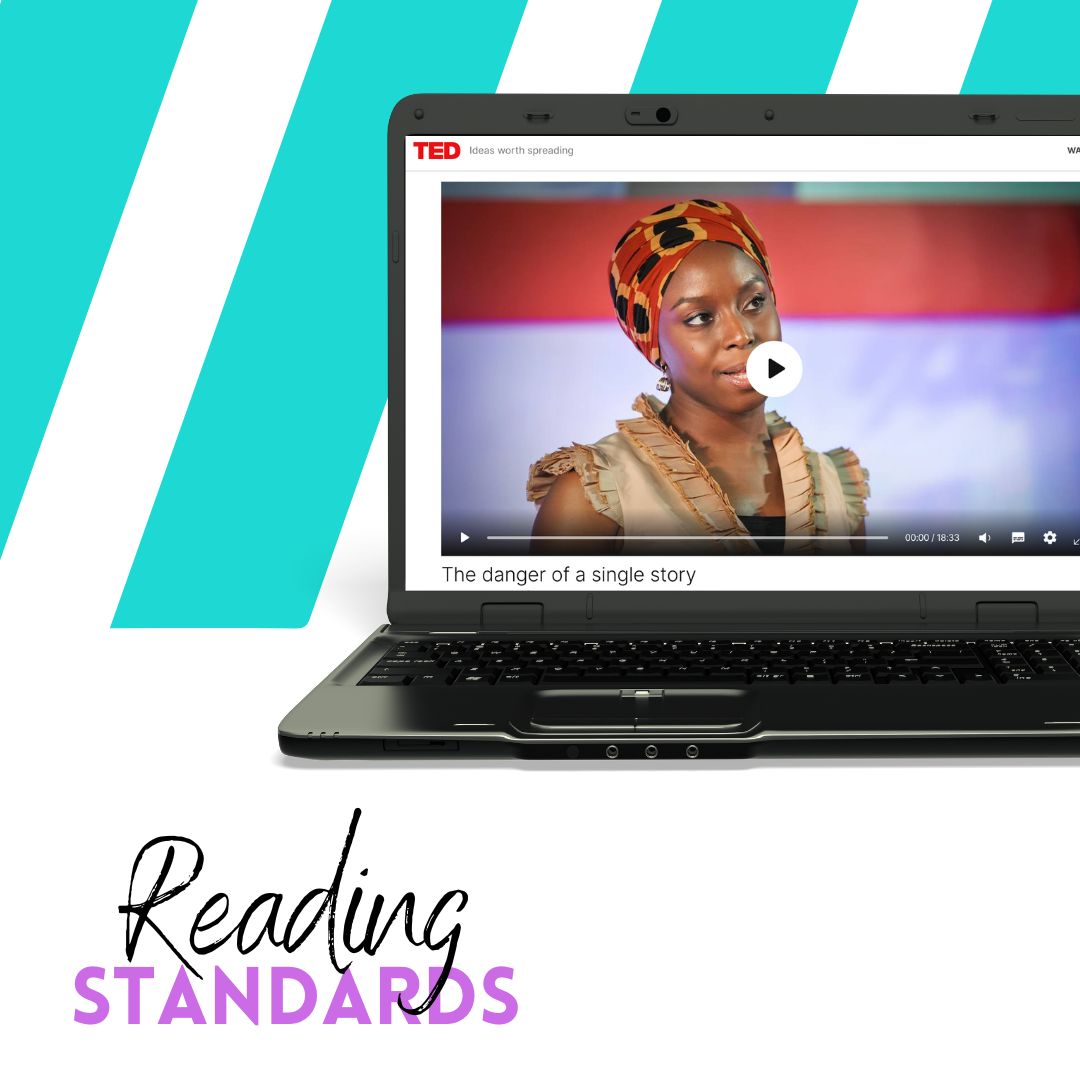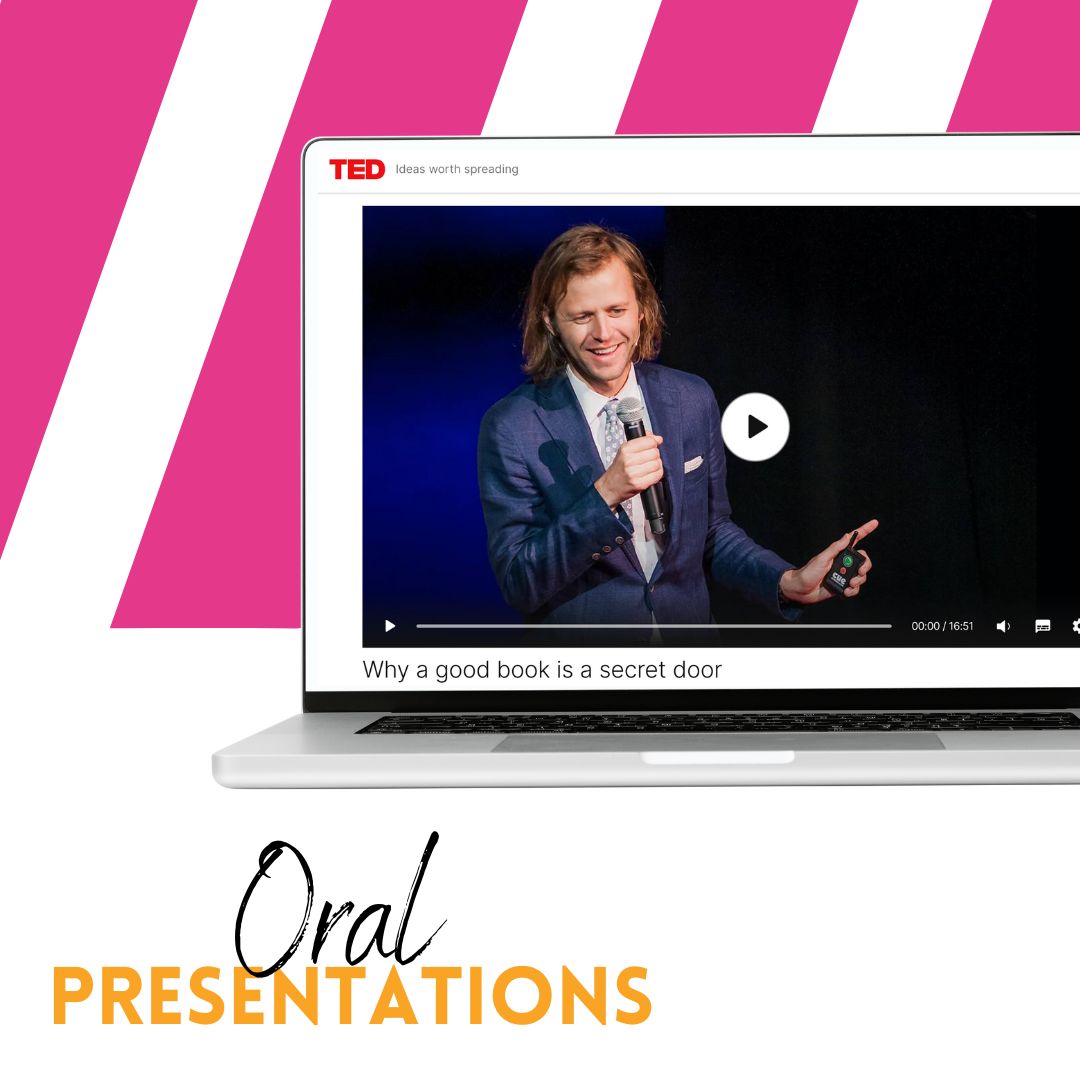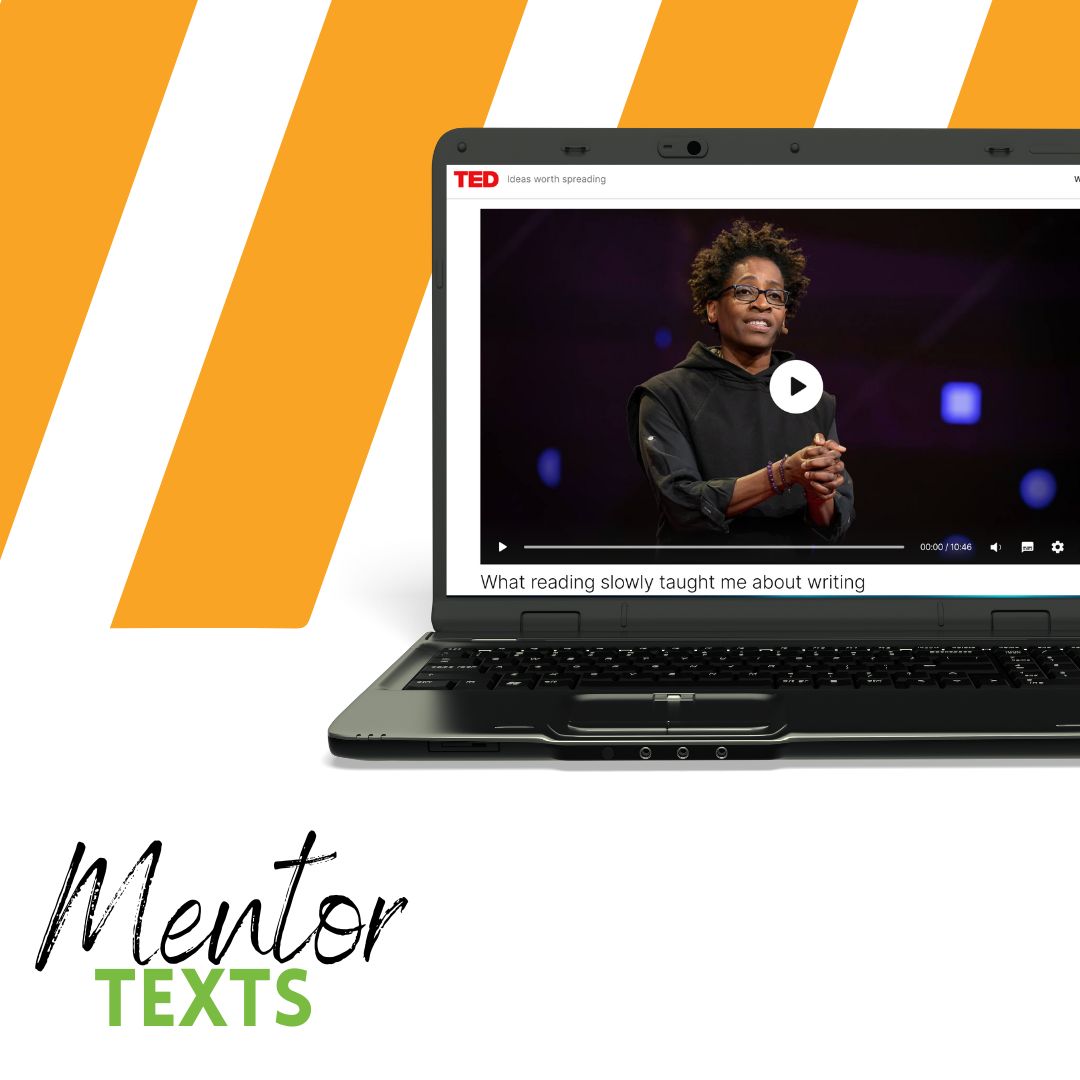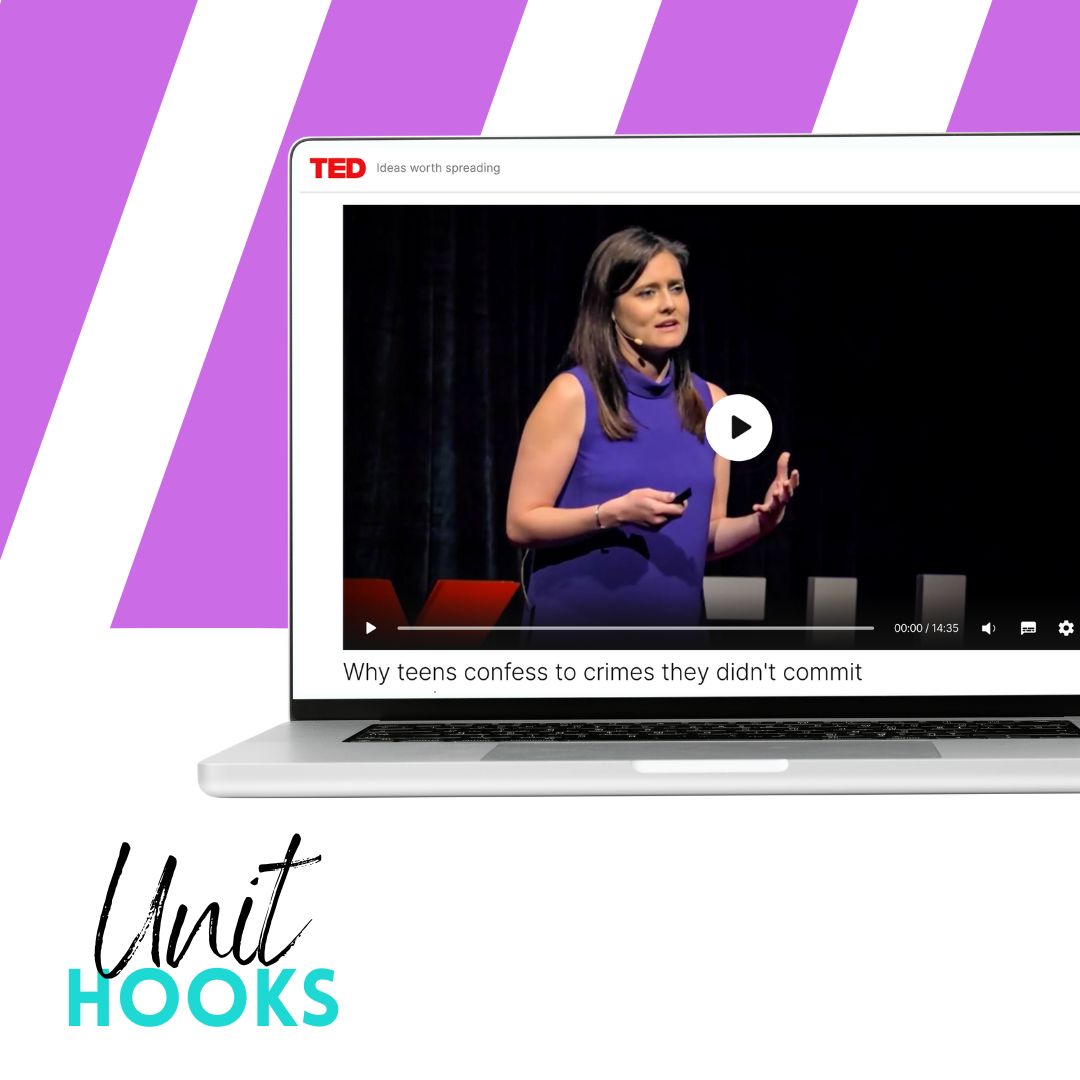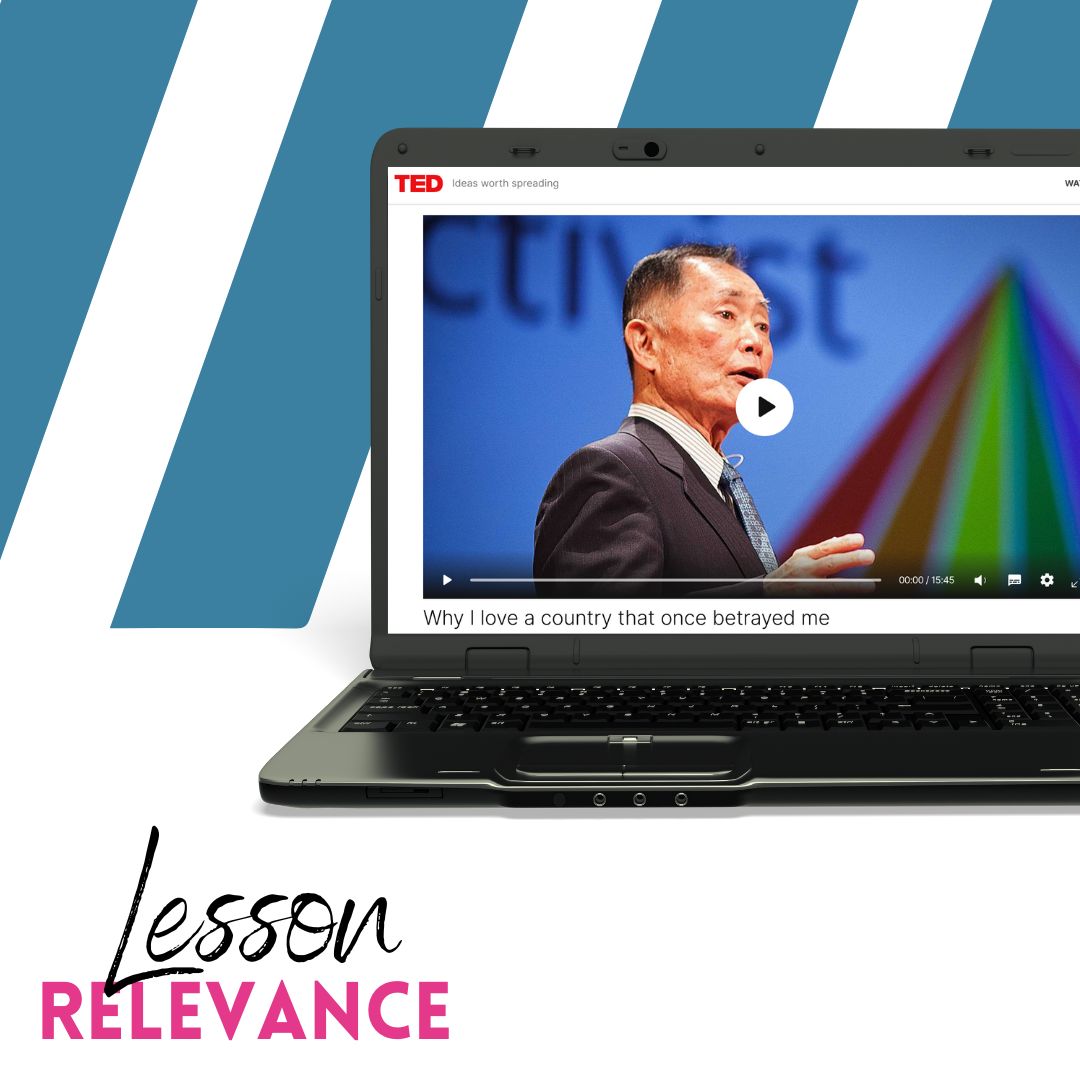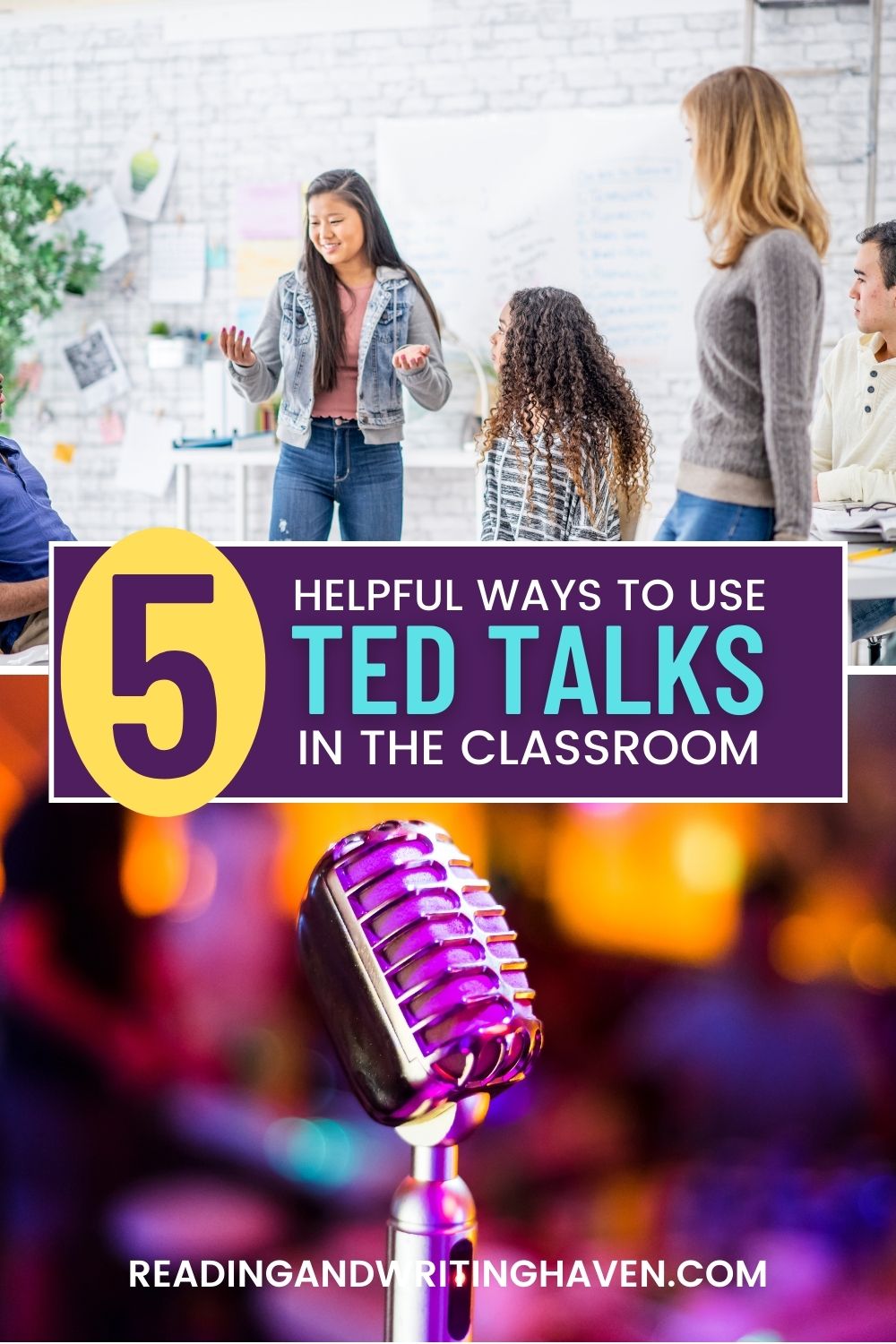5 Helpful Ways to Use TED Talks in the Classroom
TED Talks are videos that present engaging ideas in 18 minutes or less. Their compact, visual format makes them a great vessel for the middle and high school classroom! Truly, the sky is the limit for their implementation. If you’re intrigued by TED Talks and are interested in maximizing their potential for your students, this post outlines five helpful ways to use TED Talks in the classroom.
When I think about TED Talks, one of my teacher friends comes to mind right away. Kim, the founder of OCBeachTeacher, is a high school English teacher with 25 years of experience and her National Board Certification. She loves using this medium in her classroom, and when I asked her to share her top five ways to implement them, she was more than willing to discuss!
TED Talks are known for “ideas worth spreading.” Kim and I hope that the ideas we share here will make learning more accessible and exciting for both you and your students. After all, new ideas can re-invigorate the teaching and learning process. Without delay, here are Kim’s five favorite ways to use TED Talks in the classroom.
1. READING
Ways to use TED Talks in the Classroom: Meet reading informational text standards!
Most states have developed standards based on Common Core. These include reading standards which require students to integrate and evaluate knowledge and ideas in informational texts, including evaluating claims, reasons, and evidence (CCR.ELA-Literacy.CCRA.R.8).
Many TED Talks present sophisticated arguments on topics that interest students and relate to class content. For instance, in Chimamanda Ngozi Adichie’s TED Talk, “The Danger of a Single Story,” she asserts that stories have power, and it’s essential to search for multiple stories that reveal a myriad of viewpoints on human experiences. Her argument fits into units with themes about stereotypes, diversity, and perspectives.
Ultimately, with TED Talks, students are able to read and analyze visual media, to support their interpretations with textual evidence, and to evaluate and synthesize information. We can treat them just like any other piece of written text!
2. SPEAKING AND LISTENING
Ways to use TED Talks in the Classroom: Analyze oral presentations!
Just as TED Talks can be used to meet reading standards, they can also be used to help students achieve success with speaking and listening standards. Teachers can guide students through whole-class, small-group, and individual analysis of various TED Talk speakers. As students watch and listen, they evaluate the speaker’s ability to speak clearly and loudly, use appropriate eye contact, and use effective nonverbal communication.
I enjoy showing Mac Barnett’s whimsical TED Talk, “Why a Good Book is a Secret Door.” Some questions I ask students to consider and discuss include the following:
- Did he/she seem rehearsed?
- Did the speaker talk clearly?
- How did the use or lack of visual aids impact the presentation?
- Did these skills enhance or detract from the talk?
Barnett’s talk is useful for analyzing oral presentation skills because he tells several amusing anecdotes and incorporates visual and audio aids to deliver his message.
3. MENTOR TEXTS
Ways to use TED Talks in the Classroom: Inspire students to write their own talks!
When I have extra time in my courses (particularly after the AP Literature Exam or in a Creative Writing elective class), I like to incorporate a short TED Talk unit. During this unit, we watch several TED Talks as mentor texts, which students view, analyze, evaluate, and synthesize before using the writing process to create their own.
One mentor text I like to show includes Aimee Mullin’s “The Opportunity of Adversity,” in which she shows how she not only adapted to her disability, but she also empowered herself with her perseverance. Other high-interest mentor talks in my high school classroom include Wes Moore’s “How to Talk to Veterans About War,” and Pamela Meyer’s “How to Spot a Liar.”
Students can also choose some of their own talks to analyze. When using TED Talks as mentor texts, I guide students through their discussion, planning, peer review, editing, and rehearsal before they present their own talks. When I don’t have time and resources to do in-class presentations, I have students film their TED talks and upload them to a media album on our Schoology platform. Following, students complete a reflective activity that requires them to view some of their classmates’ work. An extra benefit of completing student-generated talks this way is that I have student example videos to use with future classes!
4. HOOKS
Ways to use TED Talks in the Classroom: As anticipatory hooks for units and lessons!
Having taught in the classroom for the past 25 years, I know that it’s essential to grab students’ attention at the beginning of new units. TED Talks (and TEDEd Talks) make great hooks. In fact, this week I will begin teaching The Crucible in my American Literature classes. Although the classic play has great themes and connections to modern society, the Puritan-era dialogue and setting may disinterest students at first. To help provide context and gain their interest, I will be using three talks this week in pre-reading activities:
- “What Really Happened During the Salem Witch Trials?”
- “What is McCarthyism? And How Did it Happen?”
- “Why Teens Confess to Crimes They Didn’t Commit”
I’ve noticed that as I incorporate these high-interest, visual texts, student interest increases. It also build background knowledge that helps students be more prepared to comprehend and analyze complex literature. So, if you have any texts or lessons that just don’t seem to resonate with students, try searching the TED platform for topics and themes related to the unit of study.
5. RELEVANCE
Ways to use TED Talks in the Classroom: Bring relevance to your teaching!
When I get feedback from my students at the end of my courses, my high school students consistently tell me they find the TED Talks valuable to their learning. Here’s a comment from Chase last semester:
“I love the TED Talks because it is so cool to see a topic that I might have never known about, noticed, or understood.”
For example, at the end of The Crucible, we discuss Abigail’s obsession with John Proctor and also watch “The Difference Between Healthy and Unhealthy Love” by Katie Hood. This TED Talk has an important topic for teens – relationship abuse.
Another popular talk with my students that I use when we’re reading founding United States documents, such as “The Declaration of Independence” and “The Bill of Rights” (not the most exciting reading for many teens), is one by George Takei. In his TED Talk, “Why I Love a Country That Once Betrayed Me,” the popular activist and former Star Trek actor tells his story of imprisonment in an internment camp after the bombing of Pearl Harbor. In vivid detail, he describes the painful time for his family. Despite being discriminated against and treated unfairly, he says that he learned that “democracy can be as great as the people can be, but it is also as fallible as people are.”
By connecting TED Talks through the topics and themes of our class readings, I can not only meet my literacy standards but also teach soft skills such as developing healthy relationships and being an involved citizen.
TIPS FOR WATCHING TED TALKS
Kim advises teachers who decide to use Ted talks with students to make sure to preview them first. TED Talks, just like any other text, have an intended audience and purpose. You’ll have to filter each TED Talk you select through the lens of your students’ readiness and your school and community culture. Because Kim teaches older high school students, some of her TED Talks recommended in this post require some maturity.
One great feature of TED Talks is the ability to use closed captioning for hearing impaired students. A variety of languages are offered! Transcripts are also available at the TED links by clicking “Read Transcript” below the video.
So there you have it! Five helpful and powerful ways to use TED Talks in the middle and high school classroom. We certainly hope the ideas we have shared in this post are worth spreading.
If you’d like to read more about how Kim uses TED talks in her classroom, she has written posts on the following topics:
_______________________________________________________________
A former National Board Certified Teacher in English Language Arts/Adolescence and Young Adulthood, Kimberly Gale Patrick has been teaching for 25 years. She’s taught diverse public school English classes in grades 6 -12 and English electives, including Advanced Placement English Literature and Composition, Creative Writing, and Journalism. In addition to teaching full-time at a public high school, Kim has also taught English 101 at the local community college. Kim’s teaching philosophy stresses a desire for her students to be critical thinkers, readers, and writers so they can confidently face the many challenges in our complex society. To help students achieve this goal, Kim strives to make learning relevant and fun, taking into consideration each students’ strengths and needs.

